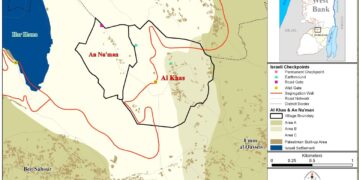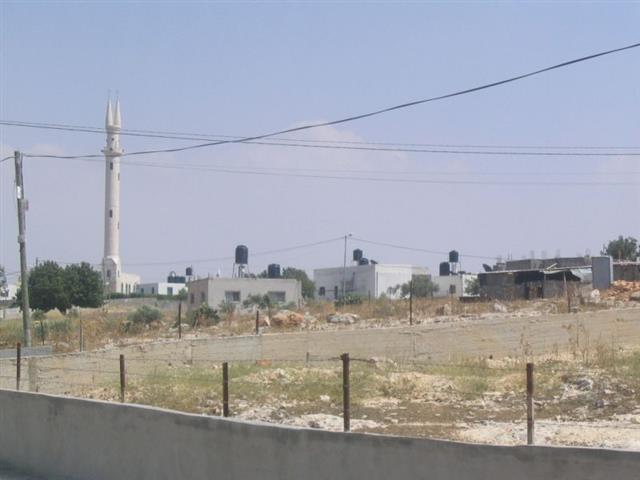Following the restrictions imposed by the Israeli Army to the population of Gaza since June 2007, we can count the damages, quantify, and qualify the disastrous humanitarian crisis, which it has caused. According to a Survey Report of World Food Programme in the occupied Palestinian territories (opt), the restriction on imports and the freeze on exports have significantly reduced the livelihood of Gaza's population, bringing larger parts of the population into the vulnerability circle. The siege of Gaza has deprived Palestinians of freedom of movement, making it impossible as the flow of food, medical supplies, and many other primary goods, such as fuel and different raw materials for various economic sectors; are barely available to cover the least minimum of needs. The economy of the Strip has been completely destroyed by the siege. Currently, some 209,800 individuals are affected by the imports restrictions and the exports' freeze; all the economic sectors have hardly been damaged. Many businesses had to shut, because of the unavailability of the raw materials, because of the diminishing buying power of people and inability to sell the products either outside or inside of the Strip where customers’ purchasing power, which has drastically decreased. Even the consumption of food has been reduced not only in terms of quantity, but there is an evident loss on quality of consumed food. The most frequent cuts the households had to do on food products are on meat, fruits, and sweet items. Moreover, the frozen items are not very easily available since the sellers are afraid of losses due to the frequent electricity blackouts. All the preceding has consequent led to various kinds of problems; particularly health problems, which are diffusing among all the population of the Strip.
Agriculture
The agriculture sector has a main share of the economic activity in the Strip. When the siege and the incursion started to take place in the area, the agriculture sector underwent many damages. Israeli military activities subtracted and destroyed thousands of dunums of fertile agricultural lands. In addition, the Israelis are now in control of 87000 Dunums along the Gaza border with Israel under the pretext of security. The Israeli Army controlled the area in progressive phases between 2005, from the time of the so-called disengagement in 2005 until July 2007. the area confiscated by the Israeli Army under the security pretext are largely agricultural areas used at one point by thousands of Palestinian there to secure a living but now that same area serve as a security grounds for the Israeli military forces and is declared restricted areas where many Palestinians get shot at and killed just for being there or even walking close to it.
Furthermore, rough estimated indicates that some 25% of the Gaza Strip farmers' plantations have been either uprooted or destroyed by the Israeli military activities. In addition to the military activities, the siege itself is damaging is doing what is worse than the uprooting and the destruction of the agricultural lands, as those Palestinian farmers who spends the entire season caring for their land and when the time come to market the harvest they have no where to go and they see it all rot at the Israeli controlled terminals that refuses to let the products be taken out of the Gaza Strip. All of these measures drove to a reduction and deteriorations in different aspects of the agricultural sector.
-
Reduction in productivity. The productivity per dunums has decreased by 25-35% due to the lake of essential fertilizers, pesticides and plastic sheet as a result of the imports restrictions.
-
Reduction in agricultural income. The income generated by the commerce of the local products, dropped at least by 40% since July 2007 due to increase of cost of production and excess supply.
-
Reduction in the area of land under cultivation. Many farmers have reduced the area of cultivated land to mitigate their losses that are resulting from diminishing income and limited marketing opportunities.
Fishing
Fishing is another fundamental sector of Gaza's economy that has suffered drastically from the Israeli Army’s siege and the blockade imposed on the Strip. Both restrictions in imports and the freeze of exports are having a devastating effect on that sector, on the life of anglers and on the one of those depending on the sector. Such impacts are most notable in the following:
-
Limiting the numbers of operating fishing boats who are allowed to go to sea in Gaza with permission from the Israeli coast guards. More than 30% of the fishing boats in the Gaza Strip are now inoperative due to the restrictions imposed by the Israeli military coast guards on the fishing boats there.
-
Reduction in fishing income: Fishermen's income has decreased by half since July 2007. Owners of fishing boats were used to have a monthly income ranging between $350 and $600, this has decreased to somewhere between $200 and $300 a month. fishermen
-
Increase financial burdens on the fishing sector in Gaza. Since the Israeli siege on Gaza, financial burdens increased dramatically. Today, some 94% of the anglers had accumulated a total debt of approximately 730,000 NIS buying on credit the fuel for their boats.
-
Proliferation of unsustainable and internationally prohibited fishing practice. Restrictions on fishing have augmented the intensity of the close-shore fishing which is against international laws of sustainability fishing activities.
In addition to the enormous damages of the main economic activities, fishing and agriculture, the siege and the blockade destroyed all the other economic sector of the Strip. Construction sector ceased production in late July 2007 due to the lack of raw materials. Some 95% of the textile factories have shut down completely, as they were unable to obtain raw materials and inability to export. The great majority of wood and furniture factories have either shut down or reduced its activities, as 75% of its outputs are destined for Israeli and the West Bank markets. The food and beverage manufactories companies have also suffered from the siege; 16 out of 32 companies have shut down and the remaining 16 factories are operating only 30% of their usual operational capacity. This is due to limited availability of raw materials caused by the restriction on imports, and the freeze of exports, which prohibited the sale of the products out of the Strip as well as to the diminishing purchasing power of costumers', At last, the commercial sector has undoubtedly been affected by the restriction on imports and the freeze of exports. On daily basis, the number of loads has decreased by 90% in terms of imports of goods.
Unemployment
Gaza Strip agricultural, fishing, industries, as well as the commercial sector were dependent on Israeli market for export opportunities. Therefore the restrictions imposed on imports and the freeze of exports, are the main cause in the increase of unemployment. Unemployment stands today at 80% of Gaza’s employment force. Some 14.2% of the households in Gaza have at least one member who lost his job since June 2007 and 58.3% of those who lost their job were the main providers for the householders. The percentage of layoffs ranges between 40 and 50%, with most of the layoffs in the cash-corps sectors. Approximately 70% of the household have at least a member who is employed; however, almost 60% of them have only one employed person.
Economic access and availability of food
Because of increases in prices, and unemployment and reduced cash income, access to food has become a serious concern for a growing section of the population of Gaza since June 2007. 71% of the non-refugee households are unable to produce or to purchase enough food. Decline on food levels, rise in the portion of expansion of food. Nowadays, the majority of the income is spent on food (62%), which brings Gaza in the range of the least developed areas in the world.
The lake of food and of stockpile of products led to the increase of the price of every primary good, aggravating the situation of the people of the Strip, the majority of the population is unable to deal with the increasing high costs.
The price of basic commodities and food items stands beyond the purchasing capabilities of most of the households in Gaza.
Gaza's local productions include fruits, vegetables and poultry, and are barely enough to deal with the needs of the residents there, while the Strip is very dependent on imports for staple foods such as wheat, flour, rice, meat, and oil. Since July 2007 baby food, olive oil, chocolate, spices, juices, and carbonated drinks are almost missing from Gaza's marketsdue to the restrictions on imports. In addition, retailers are afraid of losing their stockpile of food because of the frequent shortage of electricity that occurs in the Strip, so many of them deiced to stop dealing with frozen items.
Health Problems
The shortage of food and medicine and increase spread of illness (especially diarrhea) among other factors were the cause for the raise in the number of underweight children from 9 to 12 years old to 4% of that same age group. A high majority of population is suffering from anemia (77.5%), and malnutrition is not the only reason why diseases are incrementing in Gaza. The lack of proper care practice, hygiene, public health environment, and water and sanitation condition are becoming less and less achievable. Water supply has dropped to 15 % of the usual share allocated to residents of Gaza since June 2007 due to the shortage of fuel.
To Conclude
The siege has totally destroyed the economy of the Strip. The industrial sector is completely ruined; the agriculture and fishing sector underwent irreversible damages; unemployment reach dangerous and unprecedented levels, wider segment of Gaza's population are food vulnerable and, the most worrying thing is that no improvement is anticipated in the foreseen future. Israel continuing siege on Gaza and its control on border point will lead to further escalation, further disasters in every aspect; health, economy, agriculture, it will basically turn the lives of Palestinians there to alarming levels. This is all happening because of Israel’s insistence to practice collective punishment on the Palestinian population in Gaza and because of the international community powerlessness to put an end to the Israeli illegal practices there. If the status quo is maintained, the economic disintegration will continue, unemployment will rise, and most likely Gaza's population will become more and more dependent on humanitarian assistance for food and all other kinds of aid such as health subsidies, job creation, and labor support.
Prepared by
The Applied Research Institute – Jerusalem














